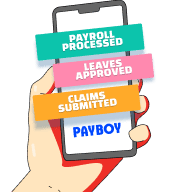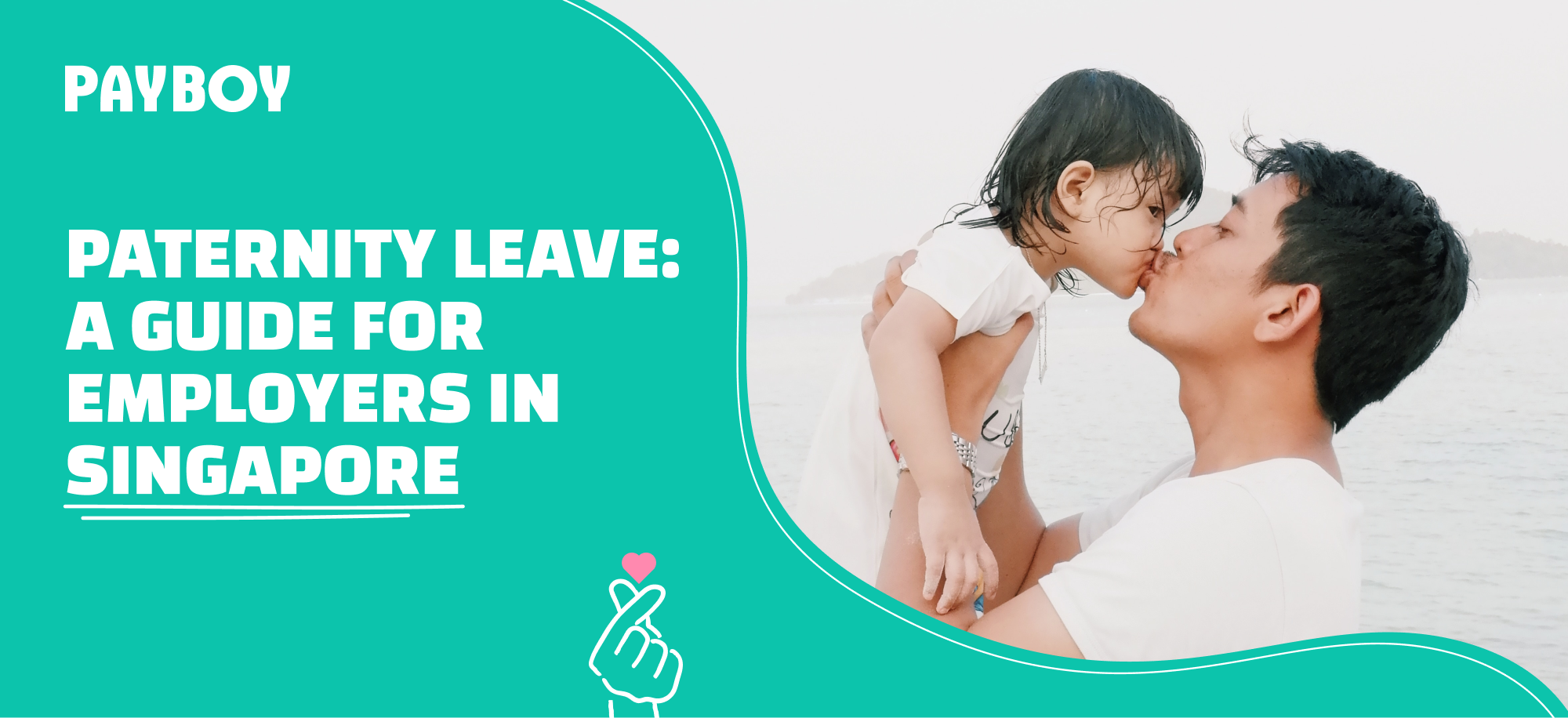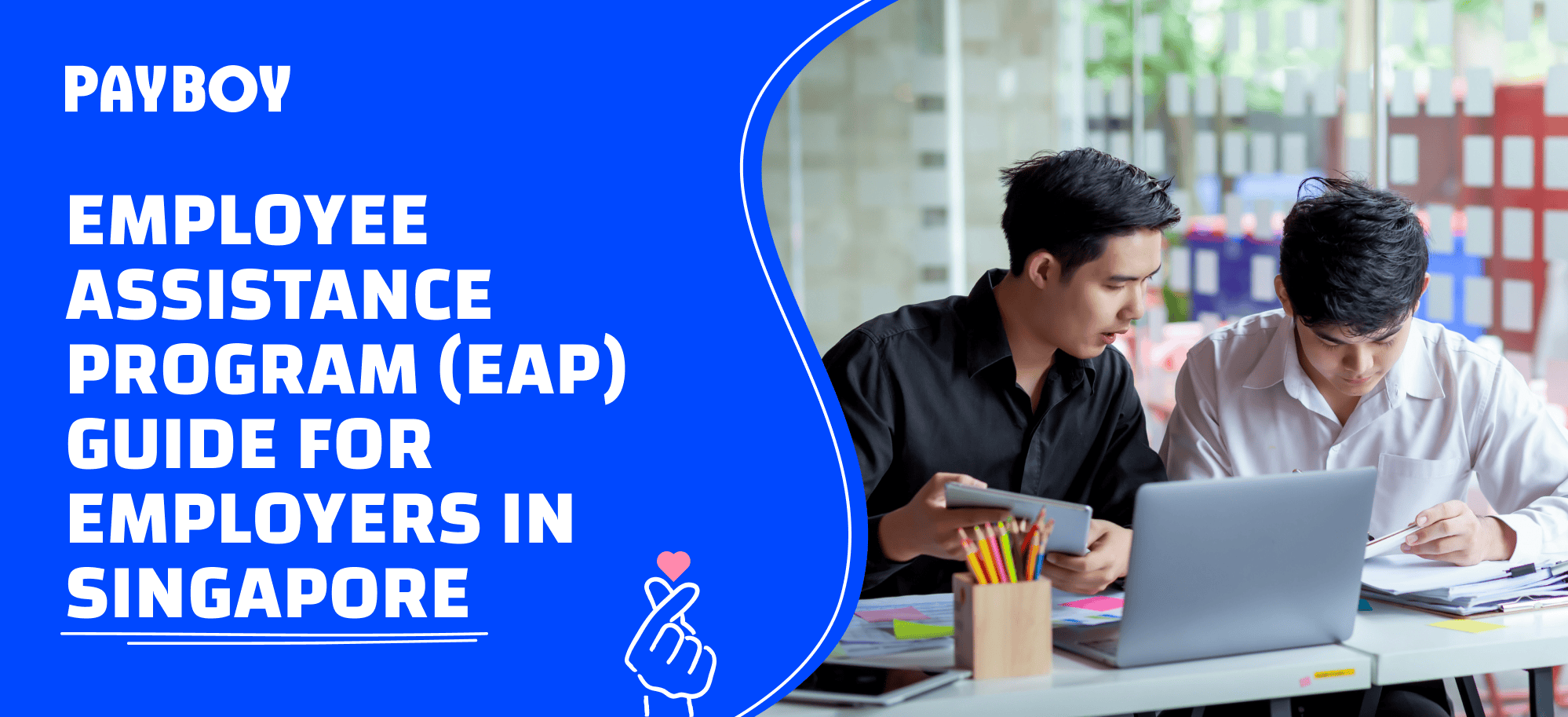Parental leave is a significant benefit for employees in Singapore, allowing them to balance work and family life during crucial life events. As an employer, understanding parental leave regulations is vital to supporting your employees and maintaining compliance with the law. In this comprehensive guide, we'll be answering common questions regarding paternity leave and providing valuable insights to ensure you're well-prepared to assist your employees during this important phase of their lives!
Who is entitled to paternity leave in Singapore?
Working fathers in Singapore are entitled to Government-Paid Paternity Leave (GPPL) for all births under specific conditions. To qualify for this leave:
- Your employee’s child must hold Singapore citizenship.
- Your employee is lawfully married to the child’s mother between conception and birth.
- Your employee must have served the company for a continuous period of at least 3 months before the birth of their child.
Is paternity leave required by law?
Yes, paternity leave is legally mandated in Singapore. Under the Child Development Co-Savings Act (CDCA), employers must provide eligible employees with the option of taking paternity leave. This legal requirement is aimed at promoting family bonding and supporting parents during the critical period surrounding childbirth.
How to calculate paternity leave days in Singapore?
Currently, take active from 1 January 2017, eligible working fathers, including those who are self-employed, are entitled to 2 weeks of paid paternity leave funded by the Government.
Government-paid Paternity Leave (GPPL) will be doubled from 2 to 4 weeks for eligible fathers of children born from 1 January 2024 onwards. Employers can grant the additional 2 weeks of GPPL on a voluntary basis, which will be reimbursed by the Government.
The newest update: From 1 April 2025, the additional 2 weeks of voluntary GPPL will be mandatory. Eligible working fathers with Singapore citizen children born on or after 1 April 2025 will be entitled to 4 weeks of GPPL.
Here's a guide to help you determine the arrangement of paternity leave that your employees are entitled to:
| Arrangements |
2 weeks GPPL |
| Default, without any mutual agreement |
Take 2 continuous weeks within 16 weeks after the birth of the child. |
| Flexibly, by mutual agreement |
Take 2 continuous weeks any time within 12 months after the birth of the child.
Split the 2 weeks into working days and take them in any combination within 12 months after the birth of the child. |
| Calculating actual leave days |
2 weeks x the number of working days in the week (Capped at 6 working days per week)
Example: If you work 6 days a week, then you will get 12 days of GPPL |
Curious about the reimbursement amount? Estimate it right here!
Tip: The employee can also apply to share up to 4 weeks of the wife’s 16 weeks of Government-Paid Maternity Leave (GPML) with the Shared Parental Leave (SPL) Scheme. Learn more with our “Shared parental leave: A guide for parents in Singapore”!
Is there an example to illustrate the calculation of paternity leave?
Example 1: Born before 1 April 2025
Here’s a scenario for Kevin, who is a full-time employee at an SME:
- Singaporean citizen
- Worked for his current employer or self-employed for over 3 continuous months
- Lawfully married to the child's mother
- Expected delivery date: 1st November 2023
In this scenario, Kevin is entitled to 2 weeks of paternity leave. He can begin his leave anytime within 16 weeks of the child's birth, depending on his personal and family needs.
Each week of GPPL is also capped at $2,500, including CPF (Central Provident Fund) contributions.
Example 2: Born after 1 April 2025
Here’s a scenario for Noel, who is a full-time employee at an SME:
- Singaporean citizen
- Worked for his current employer or self-employed for over 3 continuous months
- Lawfully married to the child's mother
- Expected delivery date: 3rd May 2025
In this scenario, Kevin is entitled to 4 weeks of paternity leave. He can begin his leave anytime within 16 weeks of the child's birth, depending on his personal and family needs.
Each week of GPPL is also capped at $2,500, including CPF (Central Provident Fund) contributions.
Are weekends counted as paternity leave?
Weekends and public holidays are counted as part of paternity leave in Singapore. This means that weekends and public holidays that fall within this period are included in the total leave duration. Employers should consider this when planning for their employees' absence and ensure that appropriate work arrangements are made to cover the absence during this time.
Does paternity leave start during the labour of the employee’s spouse?
Yes, working fathers can enjoy up to 2 weeks of leave no earlier than the child’s date of birth and no later than 16 months from the child’s date of birth (inclusive of the date of birth) for a child born before 1 April 2025.
If the child is born after 1 April 2025, working fathers can enjoy up to 4 weeks of leave no earlier than the child’s date of birth and no later than 16 months from the child’s date of birth (inclusive of the date of birth).
Can paternity leave be taken in parts?
Yes, the employee has the option to take his paternity leave either in one block or spread out over 2 weeks.
If the paternity leave is to be taken in parts based on mutual agreement with the employer,
- Take 2 continuous weeks within 16 weeks after the birth of the child.
- Split the 2 weeks into working days and take them in any combination within 12 months after the birth of the child.
How can my employee apply for paternity leave?
The employee can submit the declaration form (GPPL1) to the employer with all necessary supporting documents and apply for GPPL according to the employer’s leave application procedures.
Tip: Learn how you can simplify employee leave tracking using Payboy’s leave management system!
As an employer, how can I claim for government-paid paternity leave?
- Obtain the declaration form (GPPL1) and supporting documents from your employee and verify their eligibility for Government-Paid Paternity Leave (GPPL).
- The declaration form must be kept for 5 years from the last GPPL date for audit purposes.
- Submit your claim for reimbursement online via the Government-Paid Leave (GPL) Portal no later than 3 months after the last date of your employee’s GPPL taken.
- Check your application status on the GPL Portal. A notification will be sent to you and your employee once your application is processed.
Tip: Use this GPL reimbursement calculator to estimate the amount of GPL reimbursement that you might receive for your relevant application!
Are Singapore Permanent Residents (PR) or foreigners eligible for paternity leave?
Your employees who are PR or foreigners are eligible for Government-Paid Paternity Leave as long as their child is a Singapore citizen, he is legally married to the child’s mother, and he has worked at your company for at least 3 months.
If your employee’s child is not a Singapore citizen, you can also consider providing company-paid paternity leave to support them as they embark on their fatherhood journey.
Do contract, temporary, or part-time workers get paternity leave?
Yes, contract, temporary, or part-time workers are also eligible for Government-Paid Paternity Leave if they have worked at your company for at least 3 months.
They will be paid at the gross rate for each day that their contract would normally require them to work.
For a monthly-rated employee, the gross rate of pay for 1 day is calculated as follows:
(12 × monthly gross rate of pay) / (52 × average number of days an employee is required to work in a week)
Example:
Calvin is a part-time employee with a monthly gross salary of $2,500 and works 3 days a week. His gross rate of pay is:
(12 x $2,500) / (52 x 3) = $192.31
If he qualifies for 2 weeks of Government-Paid Paternity Leave, his pro-rated paternity leave days will be:
2 x 3 = 6 days
For 6 days, his total gross rate of pay is:
6 days x $192.31 = $1,153.85
Can an employee take paternity leave during his notice period?
Yes, your employee can use his paternity leave during the notice period. The period when he is on paternity leave will count towards his service during the notice period. All paternity leave not used before his last day of employment will be forfeited.
How can I better support my employees who are working fathers?
Supporting working fathers in the workplace is not only beneficial for the employees but also contributes to a positive work environment. Here are some tips for employers to support working fathers:
- Flexible work arrangements
Offer flexible work hours or remote work options to help fathers balance their work and family responsibilities. This flexibility can be especially valuable during the early months of parenthood.
- Shared parental leave policies
Familiarise yourself with shared parental leave policies and ensure that employees are aware of their entitlements. Encourage fathers to take advantage of shared parental leave to bond with their child and support their spouse.
- Extended paternity leave
Consider offering additional paternity leave beyond the legal requirements. This demonstrates your commitment to supporting fathers and fostering work-life balance.
- Support for childcare needs
Offer or subsidise childcare services on-site or provide information on reliable external childcare options. This support can help fathers ensure their children are well-cared for while they are at work.
- Return-to-work programmes
Develop return-to-work programmes for fathers who have taken parental leave. These programmes can ease their transition back into the workplace and provide opportunities for them to catch up on any changes or updates during their absence.
- Equal opportunities
Ensure that working fathers have the same opportunities for advancement, promotions, and career growth as their colleagues. Avoid biases related to parenthood that may hinder their progress.
- Lead by example
As an employer or manager, lead by example in terms of work-life balance. Demonstrate that it is possible to be a dedicated professional and an engaged parent.
By implementing these strategies, you can create a workplace that is supportive of working fathers, fostering a more inclusive and family-friendly environment while improving employee satisfaction and retention.
Simplify employee leave tracking with Payboy’s leave management system!
Small and medium-sized enterprises (SMEs) often find leave management to be a pain point, and we can understand why:
- SMEs don’t have as many HR resources as larger businesses. As a result, they often have to rely on manual leave processes, which can be both time-consuming and error-prone.
- SMEs often have a more limited pool of employees to choose from when someone goes on leave. This can lead to disruptions in workflow and decreased productivity.
If leave isn't managed properly, it can have a negative impact on productivity and morale. Therefore, good HR software is an essential tool for any business that wants to stay on top of its leave entitlements and ensure its employees are getting the rest they deserve. Here are some benefits of using our leave management module:
Manage leaves digitally
Payboy’s leave management module is designed to streamline the leave management process, making it easy for employees to apply for leave and check leave balances, as well as for employers to approve and manage leave requests.
Employees can also easily submit supporting documents or certificates via the mobile app, so that all the documents are stored in a central database. No more missing documents!
Sync seamlessly with Shift Scheduling and Payroll Processing modules
Shift scheduling and payroll calculation can be time-consuming and stressful while managing different leave types and requests. With Payboy HR software, when leaves are approved, the employee’s availability will be automatically updated in the Shift Scheduling module, and any encashed or unpaid leave will be calculated in the Payroll Processing module.
Customise the leave policy that best fits your business needs
We'll provide you with a MOM-compliant setup to start with, but we are also ready to assist you in customising your leave policy to fit your business requirements. Check out how to customise settings for each leave type with Payboy, including paternity leave!
Our Payboy Support Centre also helps to address most of the FAQs regarding other statutory leave entitlements asked by our customers:
Streamline your HR processes with Payboy today!
As a PSG-approved HRMS, Payboy provides a robust system to help you manage your HR tasks so that you can focus on your business and people!
With our wide range of modules, you can customise a solution to meet the specific needs of your business:
Payroll Processing | Leave Management | Claims Management | Applicant Tracking | Time Attendance | Shift Scheduling | Appraisal System | Inventory Management | Project Costing | Training Management | Benefits





















